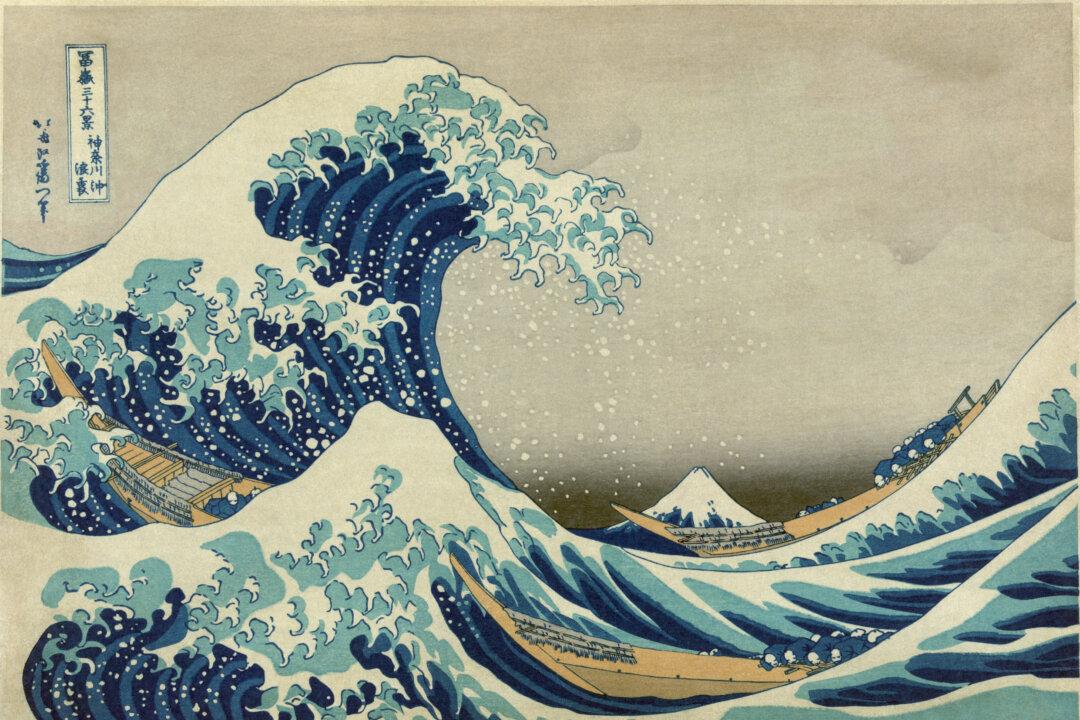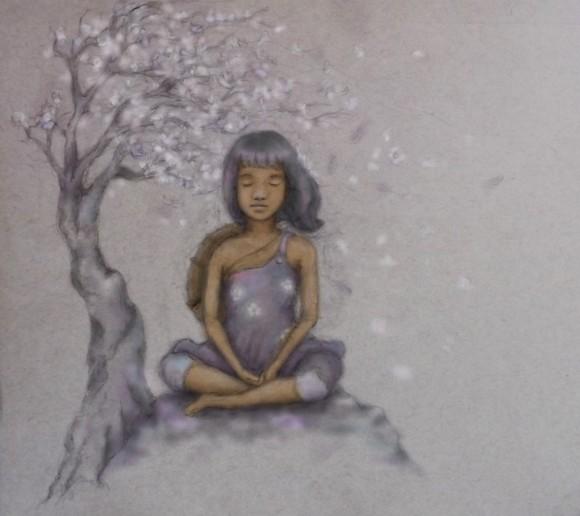The Japanese-inspired haiku is perhaps the most well-known and often-used form of poetry today. Schoolchildren the English-speaking world over know that a haiku has five syllables in the first line, followed by seven syllables in the second line, followed by a final five syllables in the third and final line. It’s as simple as counting, right? Well, if that was it, this essay would end right here.
For although the haiku is perhaps the most well-known form of poetry, it is also probably the least understood. The contents of a legitimate and interesting haiku must do about five different things all at once in a very tight space.
What makes a good haiku? Fundamentally, the art of haiku is the art of saying by not saying, by suggesting allusively. Specifically, there are five main traits that make a good haiku:
First, the haiku is a statement on humanity’s relationship with nature. The master haiku poet Basho (1644–1694) wrote this often repeated haiku:
At the ancient pond,
A frog leaps and plunges in
The sound of water
Here the poem is ostensibly about a frog but this all changes with “the sound of water,” since it is something perceived presumably by the poet. Thus, the connection or relationship may be very subtle. Here is a haiku I wrote:
Harem
Water lilies bloom
Beside a crystal fountain
In the Sultan’s court
If the poem were about lilies alone it would not be a haiku. The relationship comes alive through the Sultan, although he may not necessarily be there, and the fact that this is a harem and the lilies may not be lilies at all, but actually beautiful women devoted to the Sultan.
The second vital element of haiku is that it be set in the present, which is to say, each haiku is focused on a moment, in the moment, like a very short film. This can at times be hard to convey or pick up on as a reader, but it helps to write in the present tense exclusively and to focus on action, with things doing things. Using gerunds (-ing words) is also pretty handy for grounding the poem in the present. Here’s another Basho poem that would clearly be less effective if the last line said flew:
A flash of lightning
The screech of a night heron
Flying in darkness
The lightning’s menace is elegantly complemented by the night heron’s plight in the dark storm, creating a mood of lost hopelessness, perhaps reflecting the poet’s psychological state, which appears to be quite desperate, at the precise moment of the haiku’s composition.
The third key thing a haiku must do is twist in the third line. Traditional Japanese poetry does this through the use of a “cutting word.” Unfortunately, there is no real equivalent for that in the way the English language works. The closest parallel to this twist in other forms of English poetics is the final two lines of a Shakespearean sonnet, or the final couplet of an Elizabethan soliloquy. The cut creates a curious and very non-Western disruption, or twist, to the flow of idea developed so far in the poem, yet one that forms a new flow of the idea. Observe the below Basho haiku, his death poem:
Sick on my journey
Only my dreams will wander
The desolate moors
Here, we do not know if it is the traveler on the desolate moors or the dreams somehow on them, or both on them. The third line disrupts the traditional Western disconnection between mind and matter. This is my haiku:
Honey Bee
ebony & gold
newsprung flowers kissed to life:
the earth reborn sweet
In the final line, we see that the earth is in fact alive and the perspective has gone from tiny (the bee), to normal (flowers), to large beyond our view (the earth).
The fourth tenet of haiku is image—specifically, two images. That is the ideal number of images a haiku should have. With only one image, there is little room for action and little room for change; with more than two images, things often get said that don’t need to be said and the haiku quickly becomes slack and lost within itself. Juxtaposing two images with a colon, dash, or comma, without doing anything else, can be enough to make a great haiku. See this example by Haiku master Yosa Buson (1716–1783):
A pear flower blooms,
A woman reads a letter—
Beneath the moon’s light
The tight juxtaposition of the images of the pear flower blossoming and the woman reading a (probably amorous) letter beneath the moonlight suggests that there is some deep, mysterious, almost mythical connection between them.
The fifth element of a traditional, proper haiku is the seasonal word. This can be as obvious as “spring,” “autumnal,” or “March,” but it can also be a lot more subtle and interesting. For instance, mentioning plum blossoms is a reference to very early spring/very late winter (depending on where one is in Japan). Mentioning the cuckoo’s song alludes to summer and also to death, as another baby bird has to die for a cuckoo to survive and thus sing. Here is an example of a Buson haiku with a seasonal word:
The white plum blossoms
Almost through yesterday’s night
A new day coming


